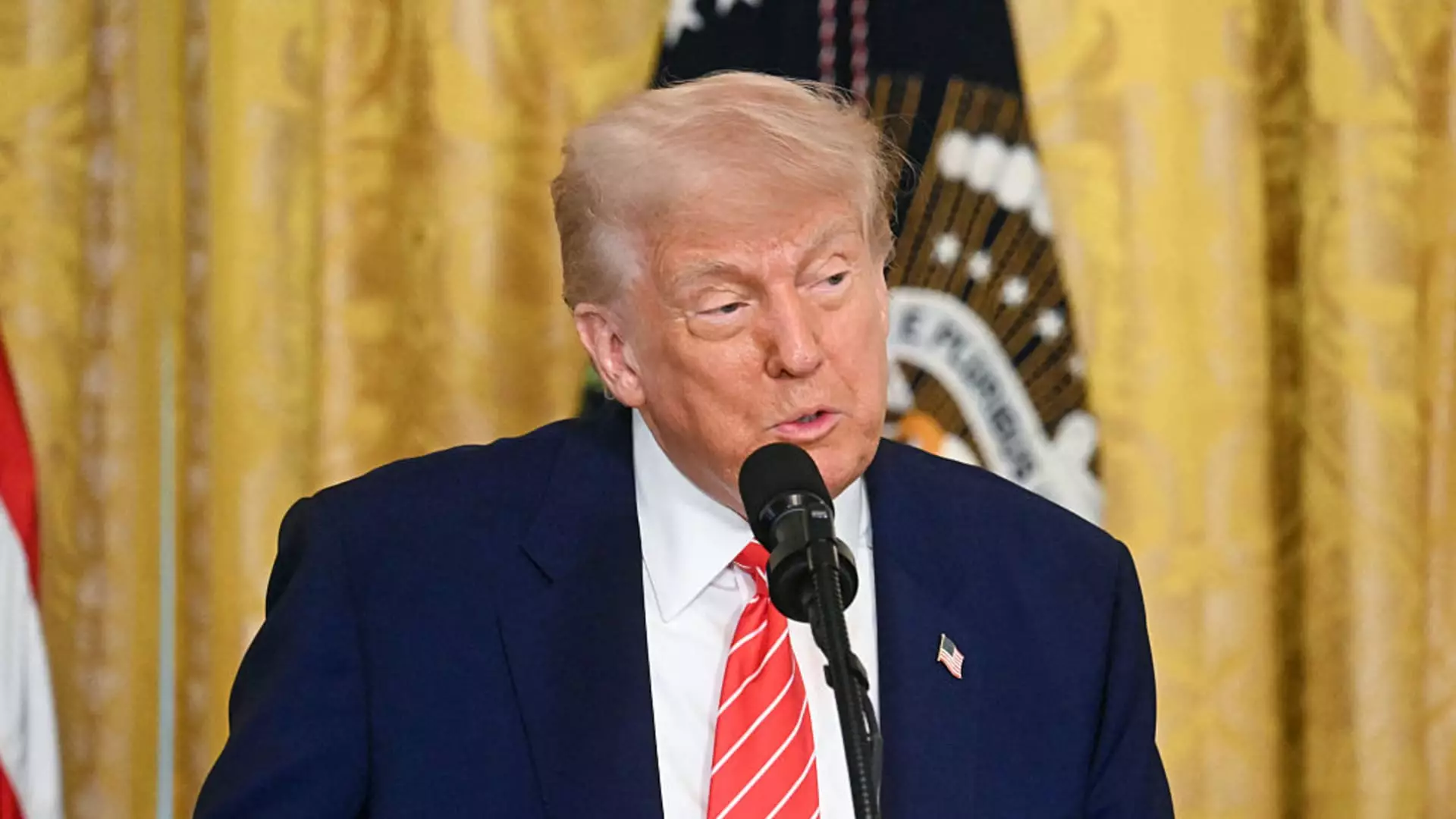In a significant maneuver that is bound to stir up controversy and debate, President Donald Trump on Monday reintroduced an ambitious policy aimed at curbing drug costs by tying American prices to those of other nations. Labelled the “most favored nation” policy, this strategy is said to aim at rectifying the long-held grievance that foreign countries have benefited economically at the expense of American patients. Such sentiments resonate with many who feel that the U.S. is shouldering an unjust burden regarding healthcare costs.
Trump’s announcement signals a return to his administration’s earlier attempts to reform the drug pricing landscape, a topic that has often stirred both fervor and frustration among Americans. While details of specific medications affected by this policy remain elusive, the administration promises a more expansive reach than previous efforts, which were limited to Medicare Part B drugs. This new directive, however, raises pertinent questions about its practicality and potential outcomes in a complex and often convoluted global pharmaceutical market.
The Impacts of Drug Pricing Strategies
The executive order intends to incentivize U.S. departments, including the Office of the U.S. Trade Representative, to confront foreign policies deemed unreasonable or discriminatory that keep drug prices lower. This approach could be perceived as a knee-jerk reaction to a long-standing economic disparity where American citizens pay a premium for the same medications available abroad at much lower prices. Trump’s critics, however, argue that this approach may inadvertently harm U.S. pharmaceutical companies, which rely heavily on profits from domestic sales to fund future innovations and drug development.
Taking a center-right viewpoint, it is difficult to ignore the fact that while patients are overwhelmed by exorbitant drug prices, significant revenues are imperative for the sustainability of the pharmaceutical industry. The Rand Corporation highlights disconcerting statistics that demonstrate how U.S. drug prices can be two to three times higher than those in competitor countries. This duality makes for a tense and pressing debate: should we sacrifice immediate relief for patients at the risk of stifling pharmaceutical innovation?
Public Sentiment and Industry Pushback
Polling data underscores the urgency of addressing drug affordability. Over seventy-five percent of Americans believe medications are priced beyond their reach, raising expectations for transformative actions from policymakers. However, the ramifications of such policies extends beyond immediate patient relief—encouraging reduced prices could disrupt the funding flow that supports critical research and development in the pharmaceutical sector. Herein lies a paradox: the very strategy designed to ease the financial burden on patients could eventually lead to fewer breakthroughs in medicines.
The pharmaceutical industry is bracing itself for financial hits from Trump’s initiatives, contending that the “most favored nation” policy could undermine profits substantially, potentially costing companies upwards of $1 trillion in the next decade. This remarkable figure alone is enough to invoke skepticism about whether the U.S. will see lower prices or merely face a loss of innovation. The existing economic paradigm suggests that companies might simply withdraw from international markets, shrinking competition and access to innovative therapies.
A Fragmented Landscape of Drug Policy
Moreover, the tumultuous state of U.S. drug pricing policy raises concerns about its consistency. A previous attempt to implement similar measures was thwarted by legal challenges from the pharmaceutical industry, highlighting the contentious relationship between government-imposed regulations and private sector interests. The Biden administration ultimately rescinded Trump’s earlier drug pricing initiatives, emphasizing the fragility and complexity of this contentious issue.
Furthermore, Trump’s ongoing efforts to introduce tariffs on imported medications complicate this already fragmented landscape. By reshoring drug manufacturing, he is attempting to pivot the U.S. market toward self-sufficiency and domestic production. However, opposition from major pharmaceutical players has surfaced, with many questioning whether such actions will indeed lead to lower costs for consumers.
Navigating Future Drug Pricing Policies
Despite potential pushback from the pharma sector, there remains optimism surrounding Medicare’s newfound capacity to negotiate drug prices—an assertion of power never before wielded at the federal level. This crucial shift could act as a counterbalance to the pharmaceutical industry’s concerns, potentially facilitating some level of compromise.
As an observer of center-right liberalism, it is essential to advocate for pragmatic solutions that emphasize both affordability for patients and sustained innovations within the pharmaceutical world. Trump’s bold moves may sound compelling in theory, but the real test will come when we analyze their effects on both patients and pharmaceutical companies in a market already fraught with challenges. The quest for a balanced approach must continue, focusing on long-term solutions that protect the interests of both the public and the industry, ensuring a healthcare system that is not just effective but equitable.

